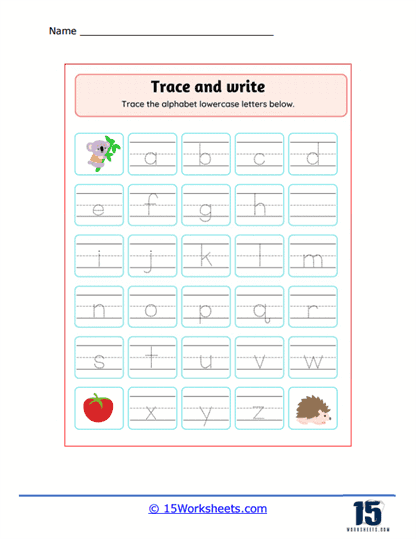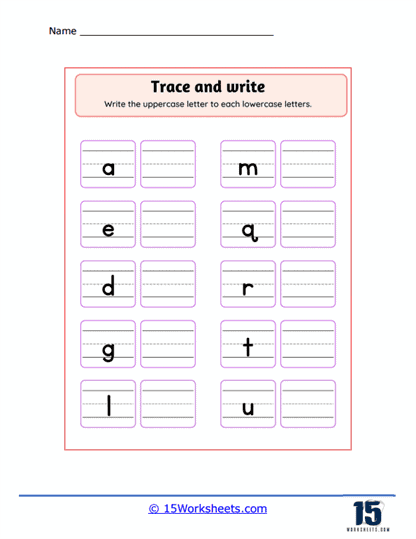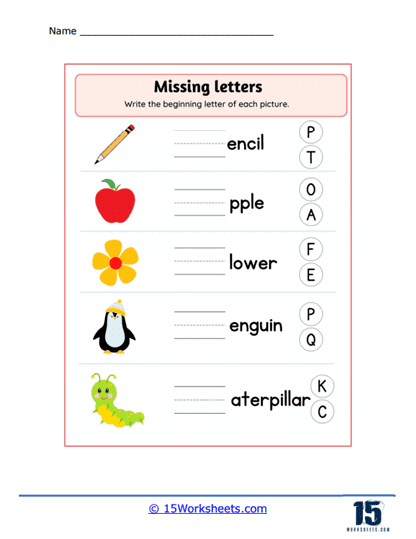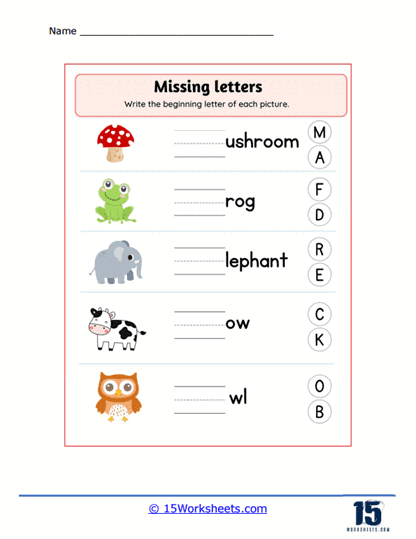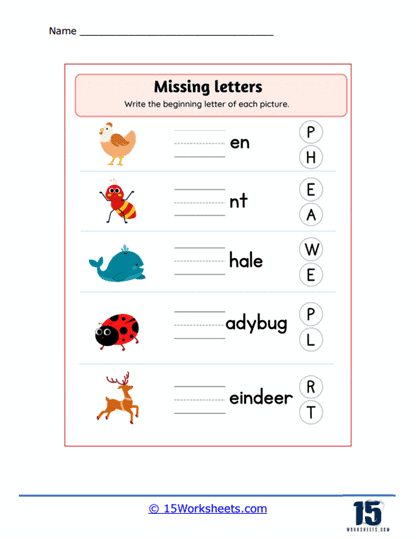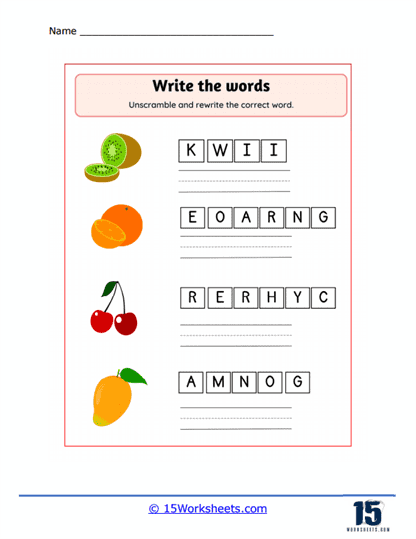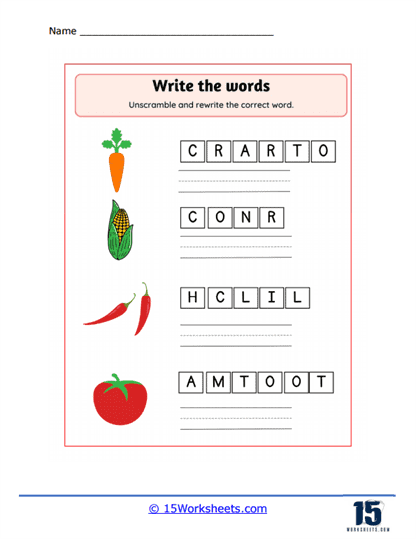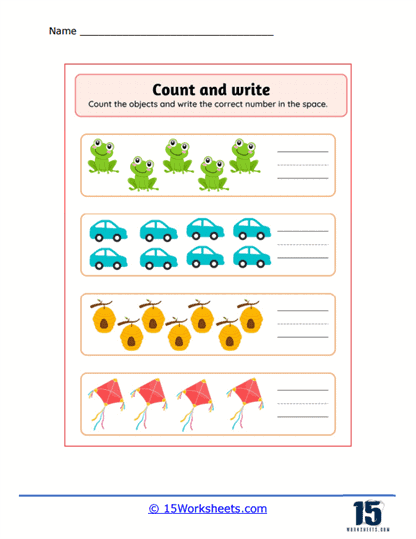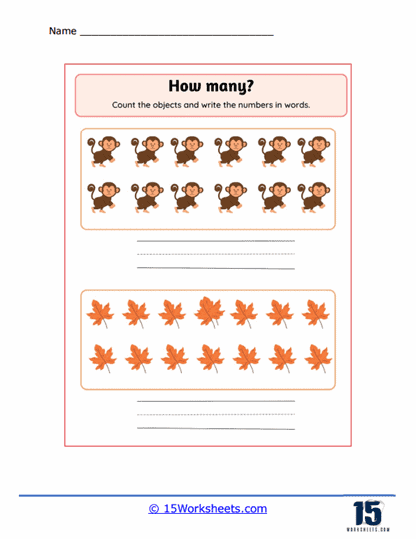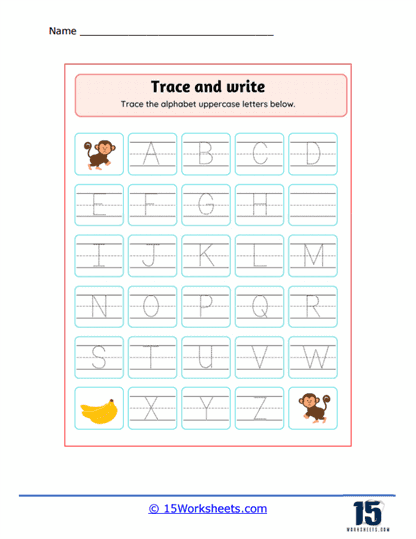Writing Letters Worksheets
About These 15 Worksheets
These worksheets were designed to help children learn and practice writing and forming letters. These worksheets feature individual letters of the alphabet, and children can practice tracing, writing, and identifying letters. Writing letters worksheets are a useful tool for teaching letter recognition, letter formation, and fine motor skills to young children.
The exercises found in these writing letters worksheets come in various formats, such as:
Tracing and Writing – Worksheets may feature individual letters with dotted lines that children can trace to practice letter formation. Children can also write the letters independently on the worksheet.
Letter Identification – Children may need to identify and circle specific letters or find all the occurrences of a given letter within a word or sentence.
Phonics and Letter Sounds – Worksheets could require children to match pictures with the corresponding initial letter sound or identify the letter sound in given words.
Matching and Sorting – Children may be asked to match uppercase and lowercase letters or sort letters by specific criteria, such as by color or by letter formation.
Writing letters worksheets offer several benefits for children:
Letter Recognition – Learning to write letters helps children recognize and identify letters, which is essential for reading and writing.
Letter Formation – Tracing and writing letters helps develop fine motor skills, hand-eye coordination, and letter formation.
Vocabulary Development – Worksheets that incorporate pictures or words can help expand children’s vocabulary and improve their language skills.
Phonics – Practicing letter sounds and phonics activities helps children develop basic reading skills, including phonemic awareness and decoding.
Foundation for Learning – Practicing writing letters is essential for building a strong foundation in literacy skills, which are crucial for children’s success in various academic subjects.
Helping students learn to write the letters of the alphabet effectively involves a structured approach. Begin by introducing each letter individually, emphasizing its name and sound. Encourage students to practice tracing the letter’s shape using worksheets or interactive writing tools, paying attention to proper stroke order.
As they gain confidence, transition to freehand writing, providing guidance and correction as needed. Incorporate multisensory activities, like using sand or finger painting, to engage different learning styles. Consistent practice and reinforcement are key, so offer opportunities for students to write letters in context, such as forming words and simple sentences.
Make the learning process enjoyable and interactive, as this can foster enthusiasm and retention, ultimately helping students master the art of writing the alphabet.

